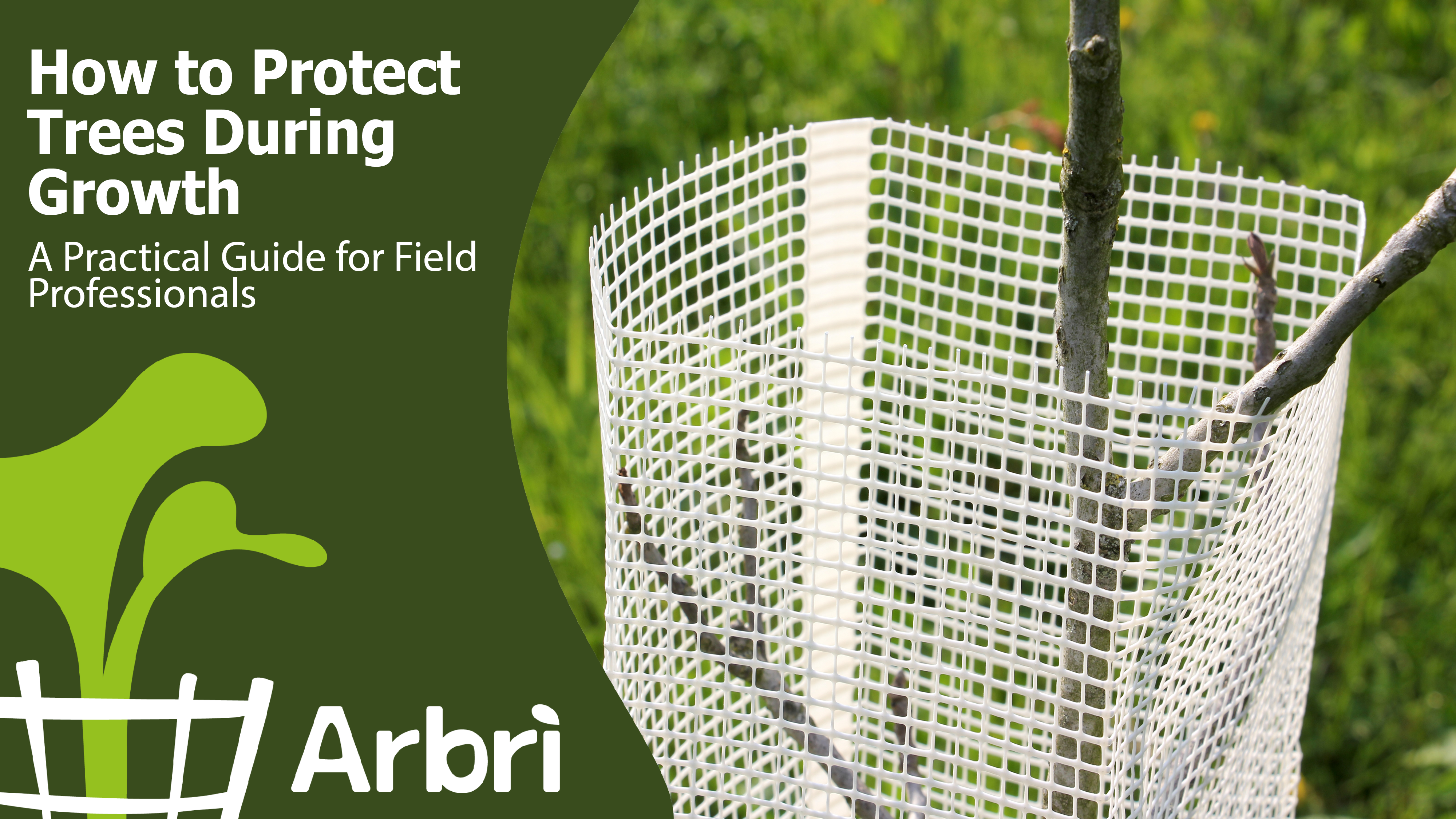🌿 Introduction
The early stages of a plant's life are the most vulnerable. During this phase, young trees and shrubs face numerous threats: wildlife browsing, mechanical damage, and wind exposure. Understanding how to protect plants effectively during this critical window is essential for any agronomist, landscaper, or forestry technician aiming for long-term plant survival.
This article outlines professional, field-tested strategies for protecting young plants, focusing on sustainable and biodegradable solutions that respect ecological integrity and operational efficiency.
🔎 1. Assessing Risks in the Field
Before implementing a protection system, conduct a thorough site analysis. Key factors include:
· Animal pressure: Rabbits, deer, rodents.
· Mechanical hazards: Agricultural machinery, trampling, or falling debris.
· Wind exposure: Prevailing gusts, channeling effects on slopes or corridors.
· Soil condition: Drainage, erosion risk, compaction.
A tailored protection strategy is far more effective than a one-size-fits-all approach.
💨 2. Understanding Wind and Animal Damage
Unlike extreme temperatures, which cannot be directly mitigated through mechanical shelters, wind and herbivory are physical stressors that can be effectively managed with targeted protection.
· Wind Effects: Repeated movement of unprotected plants leads to stem damage, reduced apical dominance, and delayed rooting. Shelter structures can reduce airflow at stem level, minimizing stress and improving anchorage.
· Animal Damage: Bark stripping and gnawing by rodents and rabbits can severely impact sap flow and trunk integrity. Mechanical barriers are the most effective deterrent in high-pressure zones.
🛡️3. Selecting the Right Shelter Type
Modern shelters must balance protection, breathability, and environmental sustainability. Arbrì offers a range of biodegradable and recyclable shelters, engineered for varied field contexts:
· BioLAPIN Shelter: Fine mesh, fully compostable. Effective against small herbivores like rabbits and voles.
· BioSilTech 200/300: Semi-rigid, ventilated shelters designed for medium browsing pressure and improved durability. Ideal for long-cycle forestry.
· TRONX Shelter: Tubular, flexible mesh that wraps snugly around young plants. Designed for quick installation and ideal for dense plantings with low to medium wildlife pressure.
Each product supports light penetration and air circulation, without compromising structural integrity.
🧰 4. Practical Considerations for Installation
· 📏 Height and diameter must match plant growth habits and local fauna.
· 🔩 Anchoring systems should be used on sloped or windy terrain.
· 🔍 Maintenance checks after installation ensure that shelters remain in position and free from obstruction.
✅ Conclusion
Professionals working in reforestation, landscape planting, or agroforestry know that early investment in physical protection yields long-term benefits. Mechanical shelters — especially biodegradable ones — reduce losses and minimize the need for chemical repellents or repeated replanting. 🌿
For tailored solutions to protect your trees against wind and herbivores, visit 👉 arbrì.eu — where you'll find field-tested systems designed for sustainable plant growth. 🌱









